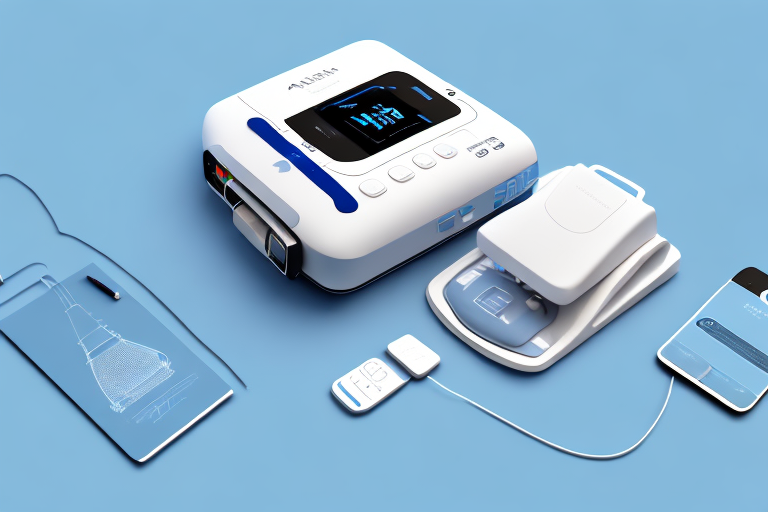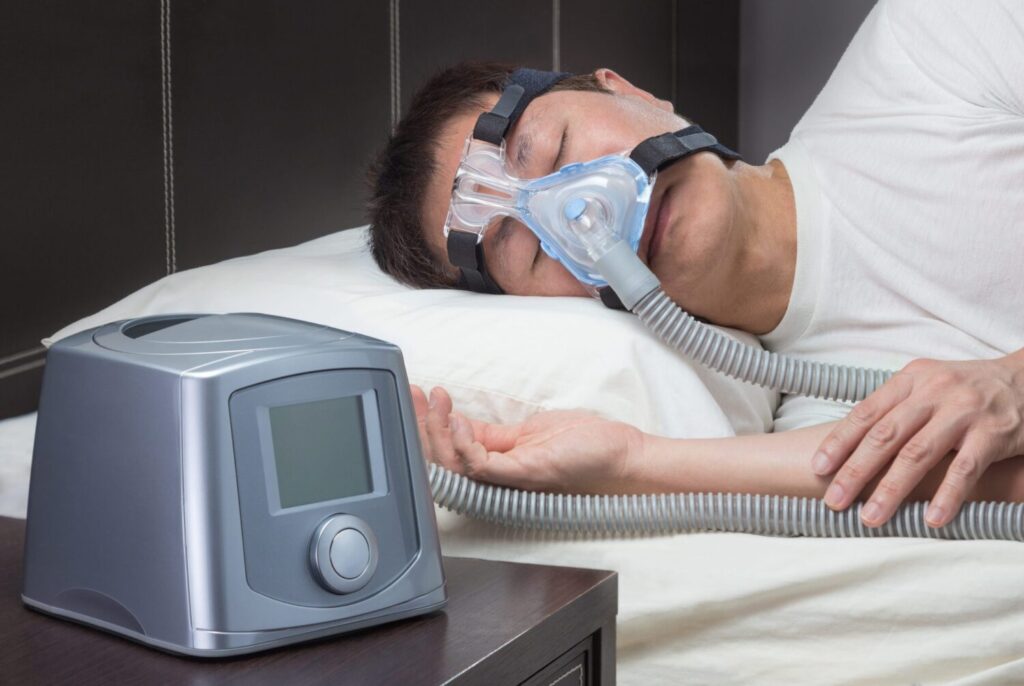Sleep apnea is a common sleep disorder that affects millions of people worldwide. It is characterized by pauses in breathing or shallow breathing during sleep, which can lead to disrupted sleep patterns and a range of health issues. In recent years, CPAP machines have emerged as an effective treatment option for sleep apnea, providing much-needed relief to those struggling with this condition. In this article, we will delve into the science behind sleep apnea, the basics of CPAP machines, the benefits of using CPAP machines for sleep apnea, an overview of home oxygen solutions, and the integration of CPAP machines into home oxygen solutions.
Understanding Sleep Apnea and Its Impact on Health
Before we buy cpap machines its role in home oxygen solutions, it is crucial to understand what sleep apnea is and how it affects our health. Sleep apnea is a sleep disorder characterized by repeated pauses in breathing during sleep. These pauses can last anywhere from a few seconds to several minutes and can occur multiple times throughout the night.
When we fall asleep, our muscles relax, including the muscles that control our airway. In individuals with sleep apnea, this relaxation causes the airway to narrow or even close completely, leading to restricted airflow. As a result, the brain senses the lack of oxygen and briefly awakens the person to resume normal breathing. This pattern disrupts the sleep cycle, preventing individuals from experiencing uninterrupted, restorative sleep.
The Science Behind Sleep Apnea
Several factors contribute to the development of sleep apnea. The most common form, known as obstructive sleep apnea, occurs when the throat muscles fail to keep the airway open despite the efforts to breathe. This can be due to excess weight, anatomical abnormalities, or other underlying medical conditions.

Another form of sleep apnea, called central sleep apnea, occurs when the brain fails to send the appropriate signals to the muscles that control breathing. This type of sleep apnea is often associated with neurological conditions or certain medications.
Regardless of the type, sleep apnea can have significant implications for overall health. The repeated interruptions in breathing not only disrupt sleep but also lead to oxygen deprivation and increased carbon dioxide levels in the blood. These physiological changes can put a strain on the cardiovascular system and increase the risk of developing chronic conditions such as high blood pressure, heart disease, and stroke.
Health Risks Associated with Sleep Apnea
Sleep apnea is not just a condition that hampers the quality of sleep; it poses severe risks to overall health. Several health risks have been associated with untreated sleep apnea, including:
- High blood pressure: The frequent awakenings and oxygen deprivation caused by sleep apnea can lead to elevated blood pressure levels, increasing the risk of hypertension.
- Cardiovascular disease: Individuals with sleep apnea are at a higher risk of developing heart disease, heart attack, and heart failure.
- Stroke: Sleep apnea has been linked to an increased risk of stroke due to the negative impact it has on blood flow and oxygen supply to the brain.
- Diabetes: Sleep apnea has been associated with insulin resistance and an increased risk of developing type 2 diabetes.
- Depression: The chronic sleep deprivation caused by sleep apnea can contribute to the development of depression and other mood disorders.
Furthermore, sleep apnea has been found to have implications beyond physical health. It can also affect cognitive function and daytime performance. The interrupted sleep and oxygen deprivation can lead to daytime sleepiness, difficulty concentrating, and impaired memory. This can impact work productivity, academic performance, and overall quality of life.
Moreover, sleep apnea can have a significant impact on relationships. The loud snoring and frequent awakenings can disrupt the sleep of bed partners, leading to frustration, resentment, and even separate sleeping arrangements. This can strain relationships and affect intimacy and emotional well-being.
It is important to recognize the signs and symptoms of sleep apnea and seek appropriate medical evaluation and treatment. With proper diagnosis and management, individuals with sleep apnea can improve their sleep quality, reduce health risks, and enhance overall well-being.
The Basics of CPAP Machines
Continuous Positive Airway Pressure (CPAP) machines have gained popularity as an effective treatment option for sleep apnea. These devices work by delivering a constant flow of air pressure through a mask worn over the nose or mouth. The steady air pressure helps to keep the airway open during sleep, preventing the frequent pauses in breathing characteristic of sleep apnea.
How CPAP Machines Work
CPAP machines utilize a small air pump to generate the required air pressure. The pressurized air is delivered to the user through a tube connected to a mask that fits securely over the nose, mouth, or both. By providing continuous positive pressure, CPAP machines prevent the airway from collapsing and ensure that the user receives a steady supply of oxygen throughout the night.
The pressure settings of CPAP machines can be adjusted according to the individual’s needs, as prescribed by a healthcare professional. Regular monitoring and follow-up visits help ensure that the CPAP machine is optimized for maximum effectiveness.
Different Types of CPAP Machines
CPAP machines come in various forms, each with its own unique features and advantages. The different types of CPAP machines include:
- Standard CPAP machines: These machines deliver a fixed pressure throughout the night, as determined by the healthcare professional.
- Auto-adjusting CPAP machines: Also known as APAP machines, these devices automatically adjust the air pressure based on the user’s breathing patterns, ensuring optimal therapy.
- Bilevel positive airway pressure (BiPAP) machines: BiPAP machines deliver two different air pressure levels, one for inhalation and a lower pressure for exhalation. This feature is particularly beneficial for individuals who have difficulty exhaling against high pressures.
Each type of CPAP machine has its own advantages and may be recommended based on the severity of the sleep apnea and individual factors. It is essential to consult with a healthcare professional to determine the most suitable type of CPAP machine.
The Benefits of Using CPAP Machines for Sleep Apnea
Using CPAP machines for sleep apnea comes with numerous benefits, ranging from improved sleep quality to long-term health advantages.
Improved Sleep Quality with CPAP
One of the primary benefits of using CPAP machines is the significant improvement in sleep quality. By ensuring uninterrupted breathing and maintaining proper oxygen levels, CPAP machines allow individuals with sleep apnea to experience more restful and rejuvenating sleep. This, in turn, reduces daytime fatigue, enhances cognitive function, and improves overall mood and quality of life.

Long-Term Health Benefits of CPAP Therapy
Using CPAP machines consistently as prescribed can have long-term health benefits for individuals with sleep apnea. By effectively treating sleep apnea, CPAP therapy can help reduce the risk of developing or worsening related health conditions such as high blood pressure, heart disease, and stroke. It can also improve glucose control in individuals with diabetes and contribute to better weight management.
Furthermore, treating sleep apnea with CPAP machines can have a positive impact on mental health. Restoring regular sleep patterns and improving the quality of sleep can alleviate symptoms of depression and anxiety, boosting overall emotional well-being.
Home Oxygen Solutions: An Overview
While CPAP machines primarily address sleep apnea, individuals with severe sleep apnea or other respiratory conditions may require supplemental oxygen during sleep. Home oxygen solutions provide a convenient way to administer oxygen therapy in the comfort of one’s home.
The Need for Home Oxygen Solutions
Home oxygen solutions are typically required by individuals with conditions that cause low blood oxygen levels, such as chronic obstructive pulmonary disease (COPD), emphysema, and severe asthma. These conditions can affect the functioning of the lungs, resulting in reduced oxygen intake and potentially leading to complications.
By using home oxygen solutions, individuals can receive the necessary oxygen levels to maintain vital organ function and overall well-being. Oxygen therapy can alleviate shortness of breath, increase energy levels, and improve the ability to perform daily activities.
Selecting the Right Home Oxygen Equipment
When it comes to home oxygen solutions, various equipment options are available. The choice of equipment depends on individual needs, lifestyle, and the severity of the respiratory condition. Some common types of home oxygen equipment include:
- Oxygen concentrators: These devices extract oxygen from the surrounding air, concentrating it for the individual to inhale. Oxygen concentrators are often preferred due to their portability and convenience.
- Oxygen tanks: Also known as oxygen cylinders, these are portable containers filled with compressed oxygen. Oxygen tanks provide a steady supply of oxygen but may require periodic refilling.
- Liquid oxygen systems: Liquid oxygen systems store oxygen in liquid form, allowing for a greater volume of oxygen in a smaller container. These systems are particularly suitable for individuals who need higher oxygen flow rates.
Consulting with a healthcare professional is crucial to select the most appropriate home oxygen equipment based on individual requirements and medical advice.
Integrating CPAP Machines into Home Oxygen Solutions
For individuals who require both CPAP therapy and supplemental oxygen during sleep, integrating these two components into a cohesive home oxygen solution is essential.

The Synergy of CPAP and Home Oxygen Therapy
By combining CPAP therapy with home oxygen solutions, individuals with severe sleep apnea and respiratory conditions can benefit from the synergistic effects of both treatments. CPAP machines ensure the maintenance of proper airway pressure, preventing airway collapse and the associated interruptions in breathing. Simultaneously, home oxygen solutions provide the necessary oxygen levels to support organ function and prevent hypoxia.
The synergy between CPAP and home oxygen therapy enables individuals to experience improved sleep quality, enhanced overall respiratory function, and a better quality of life.
Tips for Successful Integration of CPAP into Home Oxygen Solutions
Integrating CPAP machines into home oxygen solutions requires careful planning and coordination. Here are some tips for a successful integration:
- Consult with a healthcare professional: Seek professional guidance to determine the appropriate CPAP settings, oxygen flow rates, and equipment compatibility.
- Consider combined devices: Some CPAP machines are designed to incorporate oxygen delivery systems, eliminating the need for separate equipment.
- Ensure adequate space and organization: Set up the CPAP machine, oxygen concentrator, or other equipment in a well-ventilated area with ample space. Keep the equipment organized and easily accessible.
- Follow maintenance and cleaning protocols: Regularly clean and maintain both the CPAP machine and home oxygen equipment to ensure optimal performance and hygiene.
- Monitor and adjust as needed: Regularly monitor your sleep apnea symptoms, oxygen levels, and equipment function. Work closely with your healthcare provider to make any necessary adjustments or modifications to the therapy.
By following these guidelines and working closely with a healthcare professional, individuals can seamlessly integrate CPAP machines into their home oxygen solutions, maximizing the benefits of both treatments.In conclusion, CPAP machines play a crucial role in home oxygen solutions for individuals with sleep apnea and respiratory conditions. By effectively addressing sleep apnea and providing supplemental oxygen when necessary, CPAP machines contribute to improved sleep quality, enhanced overall health, and a better quality of life. With the integration of home oxygen solutions, individuals can experience the benefits of both CPAP therapy and supplemental oxygen, ensuring a restful sleep and optimal respiratory function. So, remember, good sleep and better breathing go hand in hand, making CPAP machines an invaluable tool in achieving a healthier, more vibrant life.
More to read: How Glaucoma Surgery Can Help Preserve Vision
